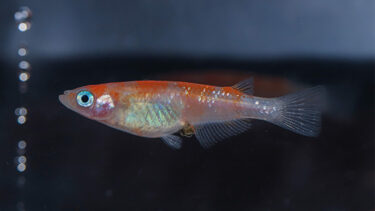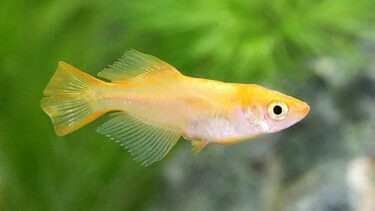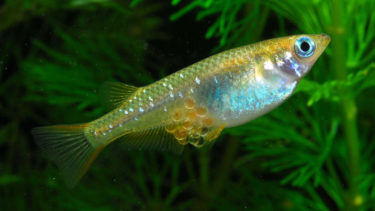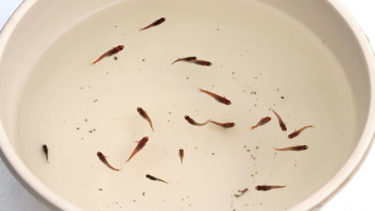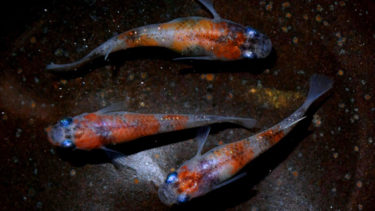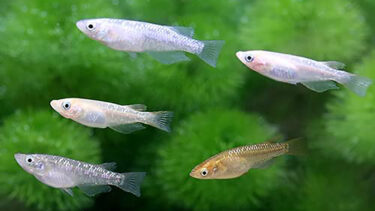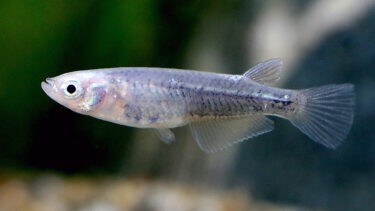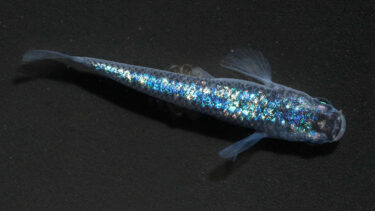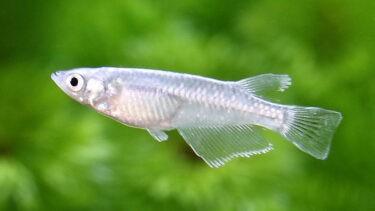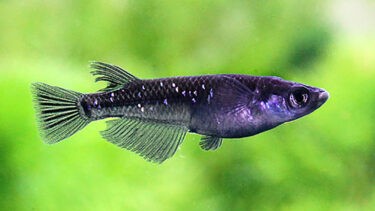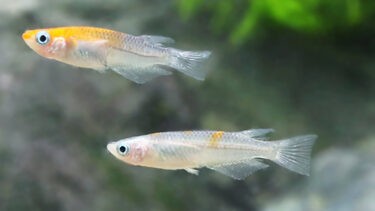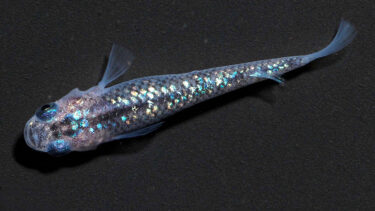The lame killifish is a killifish that has a shiny, glittery sheen on one part of its body or its entire body. Lame killifish are crossed with various varieties, resulting in a wide variety of lame killifish. For example, there are three-colored lame killifish and amber lame killifish. In this article, I would like to explain in detail the characteristics of these lame killifish and how to keep them.
What is Lame Medaka?
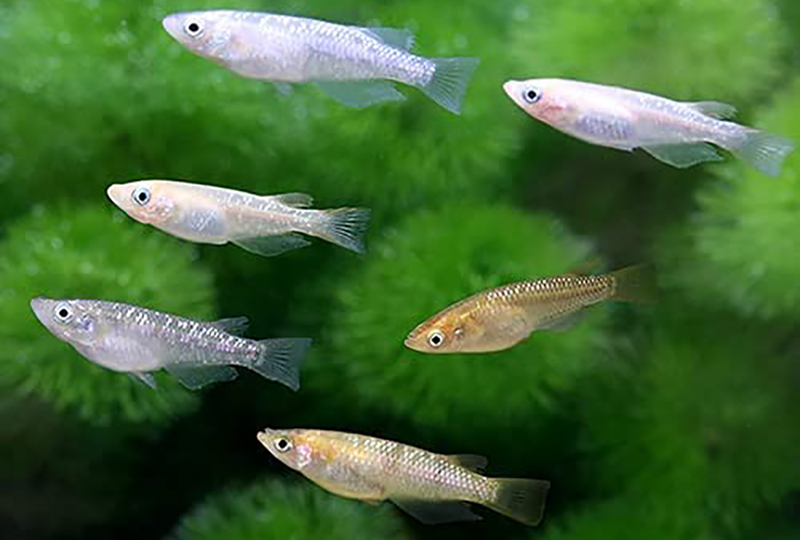
The lame killifish is a killifish that has a shiny, glittering sheen over one part of its body and over its entire body. The name "lame" comes from the fact that this shiny part looks like a spread of lame. Lame killifish are crossbred with various varieties, resulting in a wide variety of lame killifish.There are often individual differences in the way lame medaka glow. This is because the guanine layer of the rainbow chromatophore, one of the medaka's pigment cells, collects and the reflected light glints off of it, so the light may be strong or weak depending on how it collects. The price of the rainbow killifish has been gradually decreasing in recent years, and media coverage of the species has been increasing.
The Orochi killifish will be a killifish that is all black, including the eyes and fins. For this reason, it is sometimes described as the best black killifish. Orochi killifish do not develop a back-ground reaction, so the black color is not lost even when kept indoors or in an aquarium. In this article, we will discuss the characteristics of the Orochi killifish and [...].
The golden killifish is a killifish with a golden body color. The golden killifish is one of the oldest varieties of killifish, but it is still very popular. It is the origin of the vermilion-red (e.g., the Yang-Pei killifish) and the amber (e.g., the amber killifish). In this issue, we will introduce you to the [...].
Origin of the lame medaka
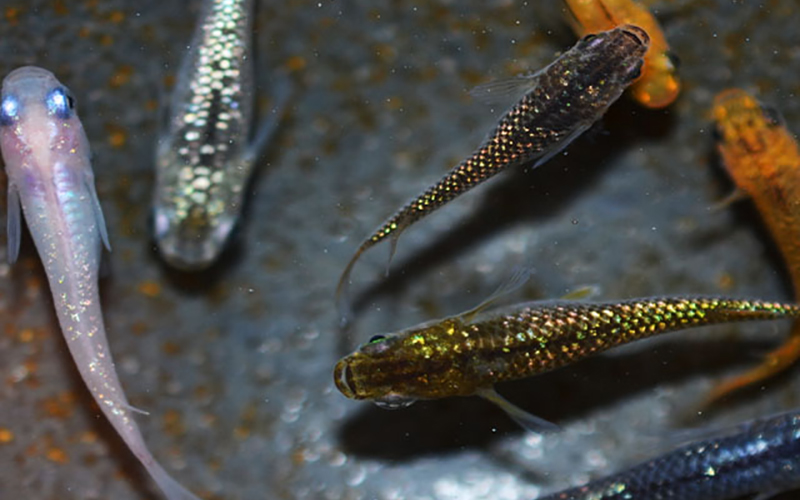
The first lame medaka was introduced in 2012 by Toshihiro Wada of Hiroshima Prefecture, who introduced the lame Mikiyuki medaka. Since then, the name "lame" and various varieties of lame killifish have been produced. Originally, the reflected light from the guanine layer was seen in individuals with many shiny scales on their sides, such as blue killifish and silver killifish. This variety was created as a result of breeding for a species with more of these lame scales.
Kohaku killifish have red (red) and white body colors. Because of their easily recognizable body colors, Kohaku killifish are widely favored by beginners and experts alike. Kohaku killifish are crossbred with a variety of other species, and there are many different types of Kohaku killifish with different characteristics. In this article, we will introduce you to such red and white [...].
The eastern red-bellied killifish has a vermilion-red body color and a glowing back. Its body color and glowing back are reminiscent of the rising sun, hence its name, Dongtianhong (the appearance of light in the eastern sky as dawn is about to break). The Dongtianhong killifish is a hikari body of the Yang's killifish [...].
Points to keep in mind when mixing swimmers
About Mixed Swimming,Some people often think that killifish can only be kept in the same species, but the real appeal of killifish is in combining them. If you are not particular about this, you can mix any kind of killifish with any other kind of killifish.However, it is best to be careful with killifish of different body types (e.g., Dharma killifish and Hirena killifish). If killifish of different body types are mixed with killifish of normal body type, problems such as inability to eat food may occur. However, there are people who mix killifish of different body types with those of normal body types, so there is no need to be concerned.However, each type of killifish, which is considered a high-end killifish, has its own distinctive appearance and shine, so it is recommended to keep them in a way that allows the enjoyment of each individual (type) rather than keeping them in many different species.
Points about spawning
The point about spawning was explained in the above section that keeping a variety of species is the best part of keeping killifish, and having various species swimming together when spawning will naturally produce killifish with the characteristics of various species. However, that is not always a good thing. For example, mixing red and white killifish can produce pink killifish, but not necessarily red or white killifish, or in the worst case, killifish with a color that is hard to describe. If you want red killifish, you should keep only red killifish because the probability of producing red killifish is much higher,I recommend that you think about what kind of killifish you want when spawning and what color and shape you want your killifish to be born, so that you will have less regret and confusion when raising them and find your own way to enjoy them.If it is just a hobby, I think you will enjoy it more if you stick to the methods that you enjoy, regardless of whether people complain about them. The following page explains the method of spawning and points to note, so please read it as well.
Many people who keep killifish want them to spawn. However, not many people know about spawning and what they need to do to prepare for it. This time, we would like to explain the method of spawning and the points to be noted [...].
After the spawning is over, the fry hatch and are born. There are many things to take care of, such as the fry's food and precautions to be taken. In this article, I would like to explain how to raise the fry and what to do about it. The period of time until hatching is over when the spawning is finished and the eggs are [...]...
Points to keep in mind when keeping lame killifish
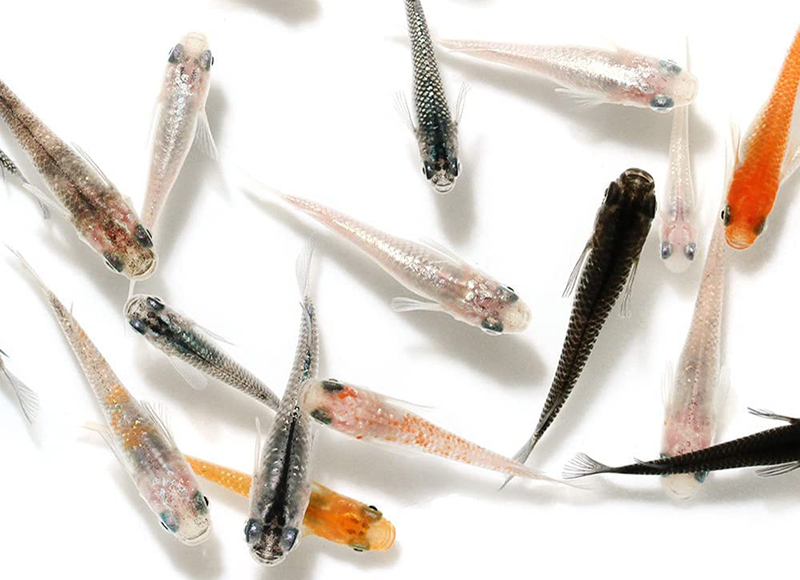
Because of its large distribution, lame killifish are often available at specialty stores, and can be purchased at relatively low prices. It is also very popular among beginners because of its easy-to-understand name and impressive appearance. Lame killifish are crossbred with a variety of species, and there is a wide variety of lame killifish. For example, there is the "tricolor lame trunked killifish," which is a cross between tricolor killifish and lame killifish with three body colors: vermillion red, black and white, and the "amber lame trunked killifish," which is a cross between amber killifish and lame killifish with brownish body colors.We recommend that you look at many other varieties available at some specialty stores. Currently, varieties with the name "lame~" derived from the lame killifish, which is beautiful when viewed from either the top or side, are becoming more popular. The sparkling characteristics of the lame-medaka go well with all types of killifish, so if you are not sure which type to choose, please consider it as a candidate.
The tricolor killifish is a killifish with three body colors: red, white, and black. Each of the three colors is clearly expressed, and individuals with a good balance of all three colors are very beautiful and popular. In this article, we will explain in detail the characteristics of the three-colored killifish and how to keep them [...]
The amber killifish has a reddish brown body color with a bright orange tail. Although its reddish-brown body color is inconspicuous, the amber killifish has a fascinating charm that draws people in, just like the jewelry amber. In this article, we will explain in detail the characteristics of the amber killifish and how to keep it [...].




